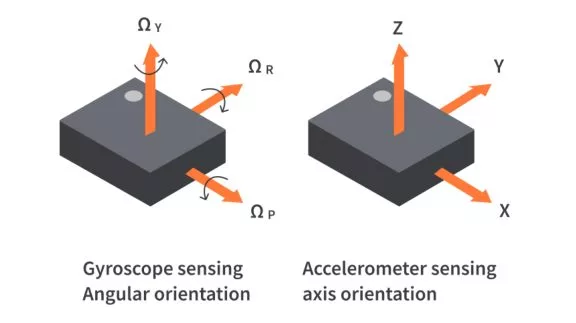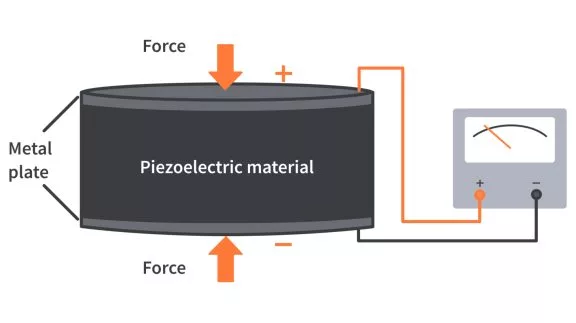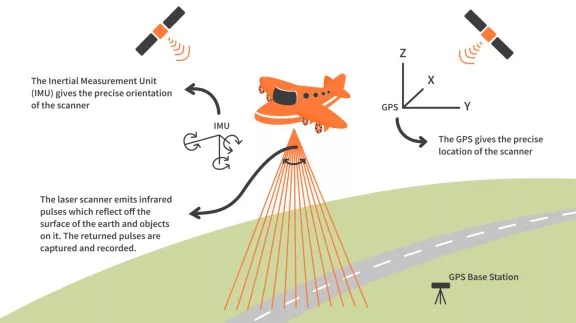Sonar and ultrasonic sensors both use sound waves to detect and identify objects at a distance. However, ultrasonic sensors particularly emit ultrasonic sound waves; that is, vibrations of frequencies greater than the upper limit of the audible range for humans. In both sonar and ultrasonic sensors, sound waves emitted by or reflected from the object are detected by the apparatus and analyzed for the information they contain, allowing for the identification of contours along their surfaces.
First developed as a means of detecting icebergs, interest in sonar (SOund NAvigation and Ranging) technology grew during the first World War in countering the heightening threat of submarine warfare. The sonar sensor emits a sonic signal that will be reflected back when it encounters an obstacle (object) and then calculates the object’s distance and position based on the reflection time and wave pattern.
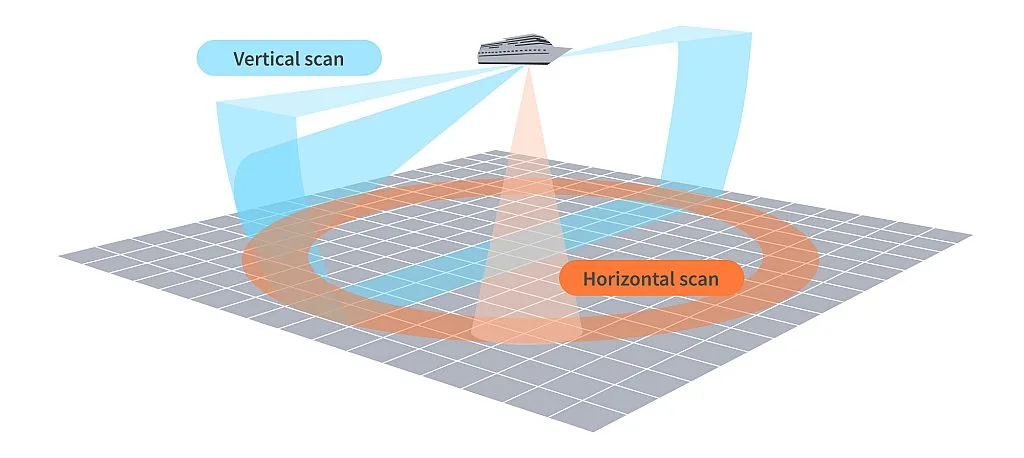
Active sonar uses a sound transmitter (or projector) and a receiver. It creates a pulse of sound, and then listens for reflections/echoes of the pulse. This sound pulse is generally created electronically using a sonar projector consisting of a signal generator, power amplifier and electro-acoustic transducer. A transducer is a device that can both transmit and receive acoustic signals ("pings"). To measure the distance to an object, the time from transmission of a pulse to reception is measured and converted into a range using the known speed of sound.
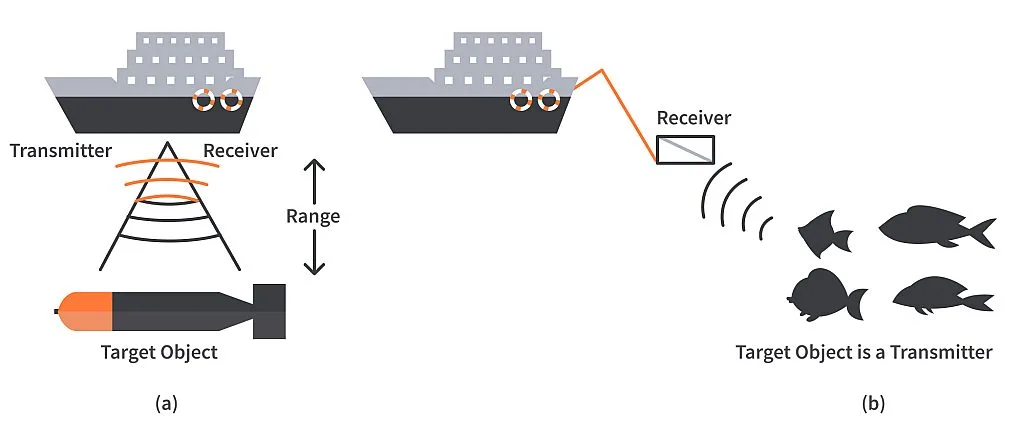
Passive sonar listens without transmitting. It is often used in military settings, although it is also used in scientific applications, especially in marine biology. Passive sonar can encompass virtually any analytical technique involving remotely generated sound, though it is usually restricted to techniques applied in an aquatic environment. The sonic frequencies used in sonar systems vary from very low (infrasonic, usually less than 20Hz) to extremely high (ultrasonic, greater than 20kHz). Generally, the lower frequencies have longer range, while the higher frequencies offer better resolution, and smaller size for a given directionality. Sonar sensors are mainly used to detect organisms, widely exploited in the detection of underwater animals and their movement.
An ultrasonic sensor particularly uses ultrasonic waves. Ultrasonic is a vibration frequency higher than what is audible to humans. An ultrasonic sensor sends out bursts of ultrasonic pulses, calculates the time taken for the echo to return after bouncing off the object, and converts the reflected sound into an electrical signal. The two main components of ultrasonic sensors are: the transmitter (which emits the sound using piezoelectric crystals) and the receiver (which detects the sound after it has traveled to and from the target). Both components can be combined into a single package (see CUI ultrasonic transceivers). Using the speed of sound, the sensor calculates the distance from the object.
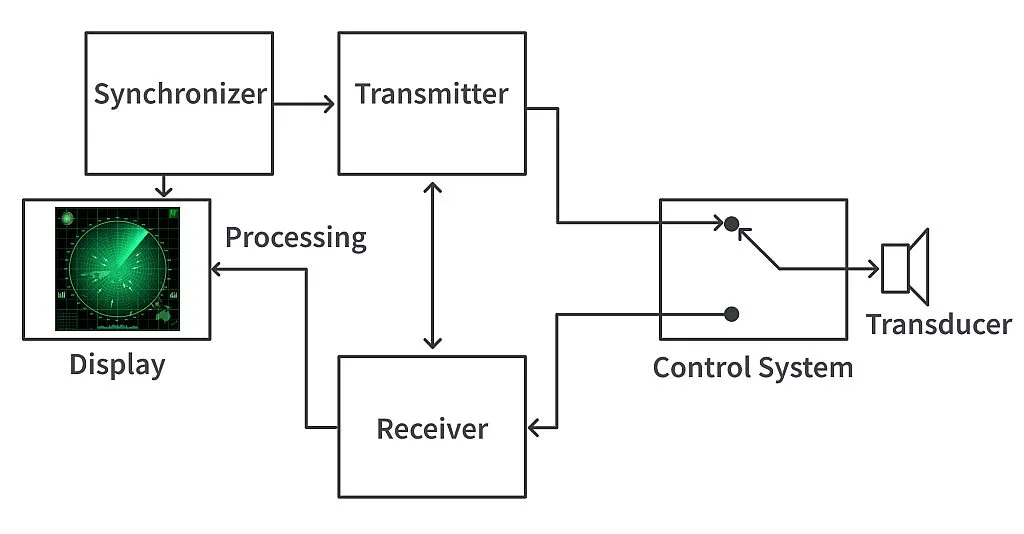
Sonar and ultrasonic sensors fundamentally use the same technique. Both also have a 3-dimensional detection zone – shaped like a cone – which makes them ideal for zone detection. Also, they have no problem detecting transparent objects, black objects and many liquids. Sound-based sensors, in certain situations, may detect objects more effectively than radar. For instance, while radar, or even light-based sensors, have a difficult time correctly processing clear plastic, ultrasonic sensors have no problem with this. They are unaffected by the color of the material they are sensing. On the other hand, if an object is made out of a material that absorbs sound or is configured or shaped in such a way that it reflects the sound waves away from the receiver, readings will be unreliable. In comparison to infrared (IR) sensors, ultrasonic sensors are not as susceptible to interference of smoke, gas, and other airborne particles (though the physical components are still affected by variables such as heat).
Ultrasonic sensors are used predominantly as proximity sensors. They can be found in automobile self-parking technology and anti-collision safety systems. They are also used in robotic obstacle detection systems. Applications of ultrasonic sensors are numerous and essential in industry (manufacturing), defense, medicine, and so on. The typical applications of ultrasound in industry is non-destructive testing (utilizing sound waves to detect deformations and defects in parts and materials) and ultrasonic thickness gauge.
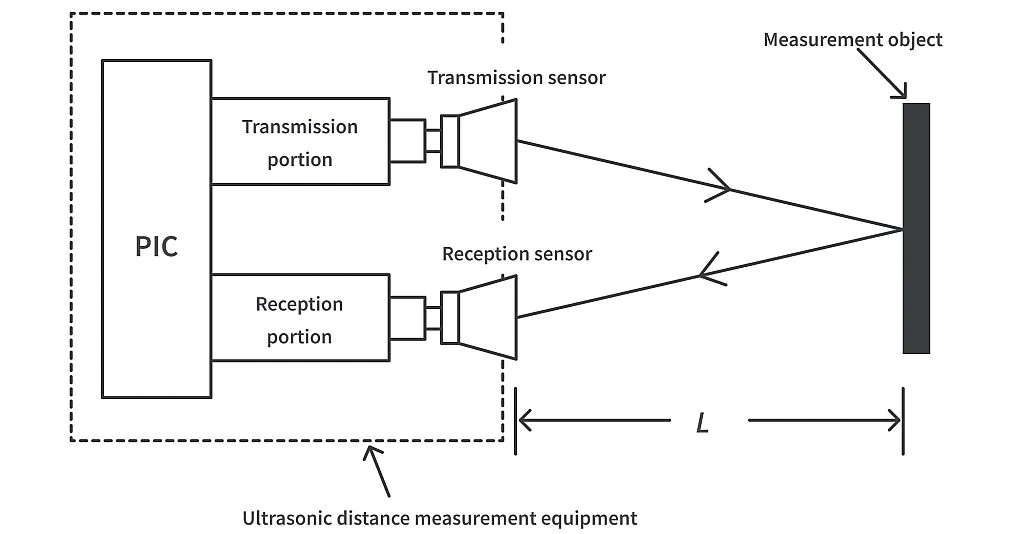
In medicine, ultrasonic transducers provide indispensable utility in noninvasive internal imaging examinations. Ultrasonic imaging is created by using both the echo time of the ultrasound and the Doppler shift of the reflected sound to determine the distance to the targeted internal organ and its movement. Water-level sensing is another good use, and can be accomplished by positioning the sensor above a water surface to “see” the bottom of a body of water. With the correct set-up, ultrasonic sensors can even measure fluid flow rates. In the simplest case, a transmitter and a receiver (should be separate in this configuration) are aligned with the flow of a fluid. Since sound is traveling through a moving medium, the speed of sound relative to the fluid elements will be increased or decreased by the velocity of the fluid itself. This can be applied to flow inside pipes by aligning the transmitter and receiver at an angle to each other, calculating the effective velocity increase based on the trigonometric relations between the two. Flow rate accuracy can be increased by using data from multiple ultrasonic elements, giving results accurate to within a fraction of a percent.
In summary, sonar and ultrasonic sensors operate on the principle of utilizing sound waves to detect objects, and receiving the reflected echo off of the target to measure distance. Active sonar emits pulses to precisely seek out objects while passive sonar only receives echos from objects within its range. Ultrasonic sensors operate at frequencies greater than 20kHz. The sensors used in these systems are capable of converting an alternating current into ultrasound and the reverse; converting ultrasound into an alternating current. Some systems use separate sensors to transmit and receive, while others combine both functions into a single sensor or transceiver. These systems determine distance based on time-of-flight measurements along with the speed of the sound in the propagation medium. With their accuracy and unique advantages over conventional sensors, the range of significant applications for these systems is rapidly increasing.

